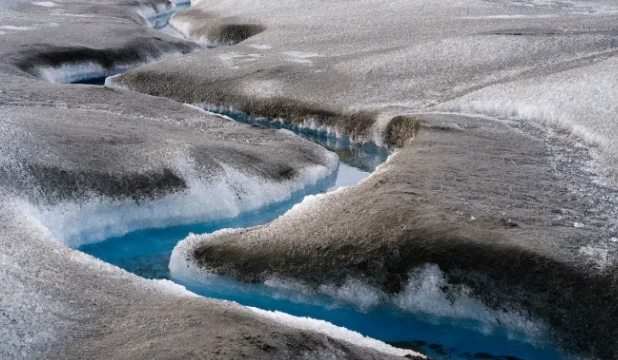
The world's biggest lsland Greenland is facing high levels of glacier melt downs, a recent global observation study denotes.
The rapid ice melts are having a huge impact on Greenlands landscape including sedimentation of its waters which hindering the thrive of the aquatic life that supports fishing in the Artic ocean area.
In comparison over the last threee decades, Greenland's ice loss is roughly 36 times the size of New York city, the land rapidly giving away to wetlands and shrubs.
The amount of vegetation in Greenland has consistently doubled as the country that was once covered in ice and snow has since then transformed into barren rock, wetlands alone quadrupling in the 30 year time.
By analyzing satellite imagery, the scientists discovered that Greenland had lost 28,707 square kilometres of ice in the three decade period warning a cascade of impacts that could have serious consequences for climate and sea level changes.
Scientifically, warmer air temperatures have driven ice loss which inturn raised land temperatures which is responsible for the melting of permafrost, a frozen layer just beneath the Earth's surface and found in much of the Artic, that melts and releases carbon fumes inform of carbon dioxide and methane only contributing to more global warming effect.
The permafrost effect has also been detected to cause land instability which could alternatively impact infrastructure and buildings.
The loss of ice has negatively affected the world in causing what is known as the feed back loop.Due to the presence of ice and snow, the sun's energy and is reflected back into space preventing excessive heating in parts of the earth.
But disappearance of ice only brings these areas to absorb more solar energy raising land surface temperatures causing further melt downs and other negative impacts.
As the usual phenomenal ice melt increases the amount of water in lakes which absorbs more solar radiation than snow and ice raising land surface temperatures.
Greenland has been reported to be warming at twice the global mean rate since the advance of the 70's with more temperatures rise warning issued over the coming years.
The world's biggest island, mostly covered by ice and glaciers with around 57,000 people is autonomously under the kingdom of Denmark.
Much of the population is indigenous and many people there rely on natural ecosystems for survival.

















